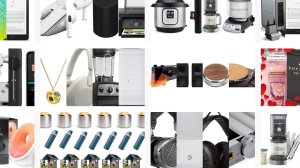Table of Contents
Does your YouTube algorithm feel kind of…stuck? I know I’ve been there—getting recommendations about things I’m trying to think less about. It’s too easy to click, which in turn teaches YouTube you’re interested in that topic, which means you see more recommendations like that. It’s an endless cyle.
That’s why, if you want to stop YouTube from consuming your life, you need to take control of the algorithm. We’ve talked about how to reset the Instagram algorithm; here’s how to do the same thing with YouTube.
Delete everything from your YouTube history
To get started, head to myactivity.google.com. From here you can delete everything you’ve done on Google products—things you’ve searched for, the websites you visited in Chrome, the places you went to on devices with Google Maps installed, and all of the YouTube videos you’ve watched.
You can filter down to see only your YouTube videos by clicking YouTube History then clicking Manager History. From here you can manually delete any videos that you’d rather not have influencing your YouTube algorithm—we outlined how in our article about how to find, edit and clear out your YouTube history. Anything you delete will stop affecting your YouTube algorithm. There’s even a search tool, meaning you can filter down to only videos that mention particular topics. This is great if you want to be surgical about the topics you don’t want to see anymore: just search for something and delete the videos you’re no longer interested in.
You can also delete everything, thus completely resetting your YouTube algorithm. To do this click the Delete button, then click Delete all time.

You will be asked to confirm, after which all of your YouTube watch history will be deleted. Head back to YouTube and you’ll see that there are no videos on the homepage. To find something to watch you’ll have to use search or head to the subscriptions page instead.

Your homepage will repopulate as you watch videos. Note that your algorithm will still be affected by your subscriptions, your Chrome history, and any other information Google still has about you.
If you’d prefer that your YouTube homepage stay blank that’s possible: just head back to myactivity.google.com. From here you can turn off all YouTube history.

Do that and YouTube will stop tracking which videos you’ve watched going forward and YouTube’s homepage will remain blank so long as you’re logged into your Google account.
Freetube stops Google from tracking you entirely

Want to avoid Google tracking you altogether? Look into Freetube, a free and open source application built around the idea of privacy. This application is available for Linux, macOS, and Windows computers. It stores your watch history on your computer, not in the cloud, meaning you can keep track of what you’ve watched without allowing Google to.
There’s a potential downside, though: Freetube doesn’t support ads. If you want ads to show up multiple times in every video you watch, don’t use Freetube. Jokes aside, there are other great features here, from the ability to turn off comments to turning off recommended videos entirely. Check out our full writeup of Freetube for more information.



